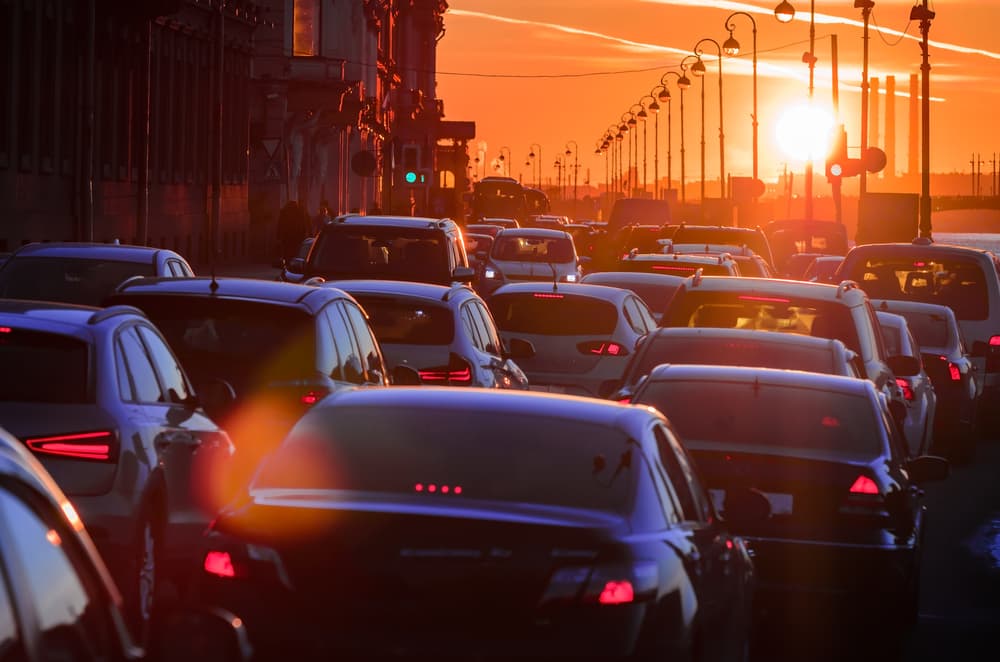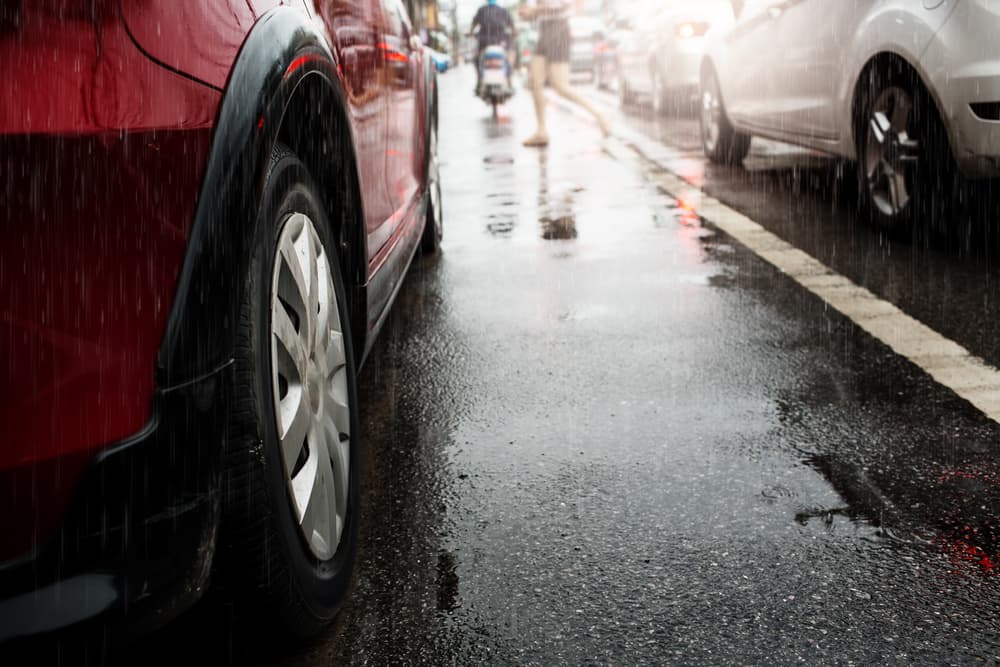Rear-end collisions are among the most common types of car accidents, and they can happen to anyone at any time. Whether you’re driving home from work, running errands, or taking a road trip, the risk of being involved in a rear-end collision is always there. If you’ve experienced a rear-end car accident, seek legal guidance from an seasoned car accident lawyer to assist you with your case.
Distracted Driving

Distracted driving is a leading cause of rear-end collisions. This issue goes beyond just texting or talking on the phone. Distractions can include anything that takes the driver’s attention away from the road, such as eating, adjusting the radio, using a navigation system, or even being lost in thought.
When a driver’s attention is diverted, their reaction time slows down significantly. This delay in response can be dangerous, especially when traffic flow changes rapidly. For instance, if the car ahead brakes suddenly and the following driver is distracted, they may not have enough time to react and stop, leading to a rear-end collision.
Also, distracted driving impairs a driver’s ability to judge distances and maintain a consistent speed. This lack of awareness can cause them to follow the car in front too closely, leaving inadequate room to stop safely if the situation suddenly changes.
The consequences of distracted driving in rear-end collisions can range from minor vehicle damage to severe injuries, depending on the speed at which the collision occurs and other factors like road conditions and vehicle sizes.
See legal advice if you have been a rear-end collision victim due to another driver’s distracted driving. A lawyer can help you understand your rights and guide you through seeking compensation for any damages or injuries sustained.
Speeding
Speeding is another significant factor contributing to rear-end collisions. When drivers exceed the speed limit, they compromise their ability to react and stop their vehicle safely to prevent a collision.
The physics behind this is simple: the faster a vehicle travels, the more distance it requires to come to a complete stop. This stopping distance is not just the physical distance covered after the brakes are applied; it also includes the reaction time – the time it takes for the driver to perceive a hazard and to start braking.
Speeding exacerbates the dangers on the road in several ways. Firstly, it shortens the available time a driver has to react to unexpected changes in traffic flow, such as when the car in front slows down or stops suddenly. The higher the speed, the less time there is to process and react to these changes. This delay in reaction can be the difference between a near miss and a rear-end collision.
Secondly, high speeds increase the severity of a collision. The force of an impact is directly related to the speed at which it occurs. Re-end collisions at high speeds likely cause more significant property damage to the vehicles involved and more severe injuries to the occupants.
Speeding can often be a sign of aggressive driving behavior, which may include tailgating – following too closely to the car in front. This combination of high speed and close proximity leaves little room for error or adjustments, significantly increasing the risk of a rear-end collision.
For those involved in a rear-end collision where speeding was a factor, it’s important to understand the legal implications. Speeding is a violation of traffic laws, and if it contributes to an accident, it can affect the liability and outcome of any legal claims. A lawyer can clarify how the specifics of the incident affect the legal process and compensation possibilities.
Heavy Traffic

Heavy traffic is a common environment where rear-end collisions frequently occur. Congested roads, characterized by slower speeds and closer proximity between vehicles, create conditions ripe for accidents, especially rear-end collisions.
In heavy traffic, vehicles often move in a stop-and-go pattern, which requires constant attention and quick reaction times from drivers. The reduced space between vehicles leaves little room for error.
If a driver is not paying close attention or is distracted, even momentarily, they may not have enough time to stop when traffic ahead slows down or comes to a halt. This is particularly true when traffic conditions change rapidly, such as on highways during rush hours or near construction zones.
Impatience and frustration are also common in heavy traffic conditions, and these emotions can influence driving behavior negatively. Drivers may become eager to move faster, leading them to change lanes frequently or follow too closely to the vehicle in front – a practice known as tailgating.
Tailgating is dangerous because it significantly reduces the tailgating driver’s ability to react and stop if the car in front brakes suddenly.
Additionally, heavy traffic conditions can cause some drivers to participate in risky behaviors, such as sudden lane changes without proper signaling, abrupt braking, or accelerating quickly when a small gap in traffic appears. These actions can catch other drivers off guard, increasing the likelihood of rear-end collisions.
For individuals involved in a rear-end collision in heavy traffic, it’s important to consider the specific circumstances of the incident.
A lawyer can assist in evaluating the situation, including looking at the behaviors of all parties involved and the overall traffic conditions. This assessment helps understand liability and the pursuit of a claim for any damages or injuries that resulted from the collision.
Weather Conditions

Weather conditions such as rain, snow, and fog significantly impact driving safety and are notable contributors to rear-end accidents.
Rain is one of the most common weather-related factors leading to rear-end collisions. When it rains, the roads become slippery, reducing tire traction and effectively increasing the distance required to stop a vehicle safely.
This factor is particularly important shortly after the rain begins, as oils on the road surface make it especially slick. Additionally, heavy rainfall can reduce visibility, making it harder for drivers to see the vehicles ahead and react in time if they slow down or stop suddenly.
Snow and ice present even greater challenges. These conditions can severely reduce tire grip, making it difficult to control the vehicle. Stopping distances can become significantly longer than on dry roads. Snow can also obscure road markings, making it harder to judge safe following distances or recognize traffic pattern changes. In areas where snowfall is heavy, the roads might be covered, adding to the difficulty of navigating safely.
Fog is another hazardous weather condition, primarily due to its impact on visibility. Dense fog can reduce a driver’s ability to see other vehicles, road signs, and changes in traffic flow.
This limited visibility requires reduced speeds and increased following distances to allow adequate reaction time. However, not all drivers adjust their driving habits appropriately, which can lead to rear-end collisions.
The role of weather conditions is carefully examined in the context of legal considerations following a weather-related rear-end collision.
A lawyer can determine how these conditions may have contributed to the accident. For instance, if a driver fails to adjust their speed according to the weather conditions or follows too closely given the reduced visibility or road grip, you can hold them responsible for their negligence.
For those involved in a rear-end collision during adverse weather conditions, seeking legal advice can be beneficial. A lawyer can guide how to proceed with insurance claims and assist in understanding the legal implications of the collision. They can help assess the situation and ensure that the unique circumstances of the weather-related accident are considered.
Tailgating
Tailgating, the practice of following another vehicle too closely, is a common but risky driving behavior that significantly increases the likelihood of rear-end collisions.
When drivers tailgate, they leave insufficient space to stop safely if the vehicle in front brakes suddenly. The safe stopping distance between vehicles varies depending on several factors, such as speed, road conditions, and the driver’s reaction time.
The stopping distance increases at higher speeds, requiring more space between vehicles. Similarly, slippery road conditions, like those caused by rain or snow, require greater distances to ensure safe stopping.
One of the main issues with tailgating is the reduced reaction time it affords the following driver. Reaction time includes the time it takes for a driver to perceive a hazard and the time needed to respond physically, such as applying the brakes. When following too closely, there’s not enough time or space to react and stop to avoid a collision if the leading vehicle suddenly slows down or stops.
Apart from the physical risks, tailgating is often perceived as aggressive or intimidating behavior, which can lead to road rage or erratic driving responses from the leading driver. These reactions can escalate the situation, increasing the risk of an accident.
Determining liability is usually easy in a rear-end collision caused by tailgating. The driver who was following too closely is typically found at fault due to their failure to maintain a safe following distance. However, each incident has unique aspects; consulting with a lawyer can provide clarity and guidance.
A lawyer can assist in evaluating the details of the accident, including examining evidence and witness statements, to ensure a fair assessment of the situation.
Legal assistance can be valuable for those involved in a rear-end collision where tailgating was a factor. A lawyer can help navigate the accident’s aftermath, from dealing with insurance claims to seeking compensation for damages or injuries. They provide support and ensure that the rights and interests of those involved are adequately represented and protected.
Injuries Commonly Sustained in Rear-End Collisions
Victims of rear-end collisions may suffer from a range of injuries, some of which may not be immediately apparent.
Common injuries include:
- Whiplash: This neck injury is caused by the sudden head and neck movement, typical in rear-end collisions.
- Back and Spinal Injuries: The impact can cause various back injuries, potentially affecting the spine.
- Head Injuries: If the collision is severe, occupants can hit their heads against the steering wheel, dashboard, or windows.
- Broken Bones: The force of the impact can lead to fractures, particularly in the arms or legs.
- Cuts and Bruises: Shattered glass and metal can cause lacerations and bruising.
How a Lawyer Can Assist After a Rear-End Collision
If you’ve been involved in a rear-end collision, from dealing with insurance claims to recovering from injuries, there are several challenges that you might face. Here’s how a lawyer can assist you during this difficult time.
Handling Insurance Claims
Dealing with insurance companies after a rear-end collision can be an overwhelming experience. A lawyer can take on the responsibility of managing all communications with the insurance companies on your behalf. They are skilled at negotiating with insurers, ensuring that your rights are protected and that you are not pressured into accepting a settlement that is less than what you deserve.
Investigating the Accident
A lawyer can help gather critical evidence, such as traffic camera footage, witness statements, and police reports. They can also work with accident reconstruction experts to clearly establish the sequence of events leading up to the collision.
Evaluating Your Claim
A lawyer can assess all aspects of your claim, including medical expenses, lost income, and pain and suffering.
They can help quantify non-economic damages like emotional distress and loss of enjoyment of life, which are often challenging to evaluate. With their assistance, you can ensure that all potential areas of compensation are considered.
Legal Representation
A lawyer will handle all legal proceedings, from filing the lawsuit to representing you in court. They will advocate for your best interests, presenting your case effectively and arguing on your behalf.
Guidance and Support
Throughout the legal process, a lawyer can offer guidance and support. They will keep you informed about the progress of your case and explain each step in a manner that’s easy to understand.
If you have questions or concerns, they are there to provide answers and offer reassurance. Having a lawyer by your side can alleviate much of the stress and uncertainty of dealing with a rear-end collision claim.

Consult a Rear-End Car Accident Lawyer
Rear-end collisions can be a stressful and painful experience. However, understanding the causes and what steps to take afterward can make the process easier.
If you or a loved one are involved in a rear-end collision, a car accident lawyer can help. A Florence personal injury attorney can guide you through the legal process, ensuring your rights are protected and you receive the compensation you deserve.

